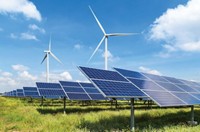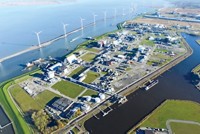Advertisement
Grab your lab coat. Let's get started
Welcome!
Welcome!
Create an account below to get 6 C&EN articles per month, receive newsletters and more - all free.
It seems this is your first time logging in online. Please enter the following information to continue.
As an ACS member you automatically get access to this site. All we need is few more details to create your reading experience.
Not you? Sign in with a different account.
Not you? Sign in with a different account.
ERROR 1
ERROR 1
ERROR 2
ERROR 2
ERROR 2
ERROR 2
ERROR 2
Password and Confirm password must match.
If you have an ACS member number, please enter it here so we can link this account to your membership. (optional)
ERROR 2
ACS values your privacy. By submitting your information, you are gaining access to C&EN and subscribing to our weekly newsletter. We use the information you provide to make your reading experience better, and we will never sell your data to third party members.
Policy
European Commission proposes definition of green hydrogen
Requirements about time and location of renewable electricity draw fire on multiple fronts
by Craig Bettenhausen
February 15, 2023

The European Commission has released a proposed definition and rules for green hydrogen to criticism from both industry and environmentalists.
The rules, which need to be approved by the European Parliament, would determine what hydrogen production projects count toward European Union and member state targets for renewable fuels. Those targets are part of EU initiatives to make the region energy independent of Russia by 2030, move the continent to 32% renewable energy by 2030, and achieve net climate neutrality by 2050.
The aim of the rules is to encourage developers to build green hydrogen capacity while ensuring that only facilities powered by renewable electricity qualify. The rules were met with immediate criticism from multiple political flanks. Environmental activists blasted them as too loose to prevent makers of petroleum-based hydrogen from getting subsidies, and energy industry groups complained that they constrain the market in ways that will drive up costs.
The rules define green hydrogen as coming from water electrolysis that’s powered by newly built renewable electricity generation equipment. An electrolysis plant with an onsite solar or wind farm would count. But a grid-powered plant would need to purchase renewable electricity from a nearby source that was built no more than 36 months before the hydrogen plant came online. It would also need to match volumes of hydrogen with corresponding renewable wattage on an hour-by-hour basis.
The industry group Hydrogen Europe says it welcomes the proposal, but it criticizes the requirement that the renewable electricity be generated nearby and at the same time as the hydrogen. “These strict rules can be met but will inevitably make green hydrogen projects more expensive and will limit its expansion potential, reducing the positive effects of economies of scale,” the group says.
The proposal includes a phase-in period lasting until about 2030. Until then, renewable energy credits generated nearby in the same month as any corresponding hydrogen will suffice. The rules are also less stringent in regions where the electrical grid is already 90% renewable or has a relatively low emissions intensity.
Dominic Eagleton, who works on energy issues at the advocacy group Global Witness, is critical of the one-month “temporal correlation” period, which he says will allow electrolyzers to run on fossil-fuel electricity when renewable electricity is scarce on the grid. That loophole can have a big climate impact because splitting water to make hydrogen is relatively inefficient, and doing it with fossil electricity can generate more emissions than making hydrogen from natural gas, Eagleton says.
“Initially, the Commission supported a much tighter temporal correlation,” he says, in as little as 15-minute increments. “It seems, however, that the Commission bowed to industry pressure.”





Join the conversation
Contact the reporter
Submit a Letter to the Editor for publication
Engage with us on Twitter